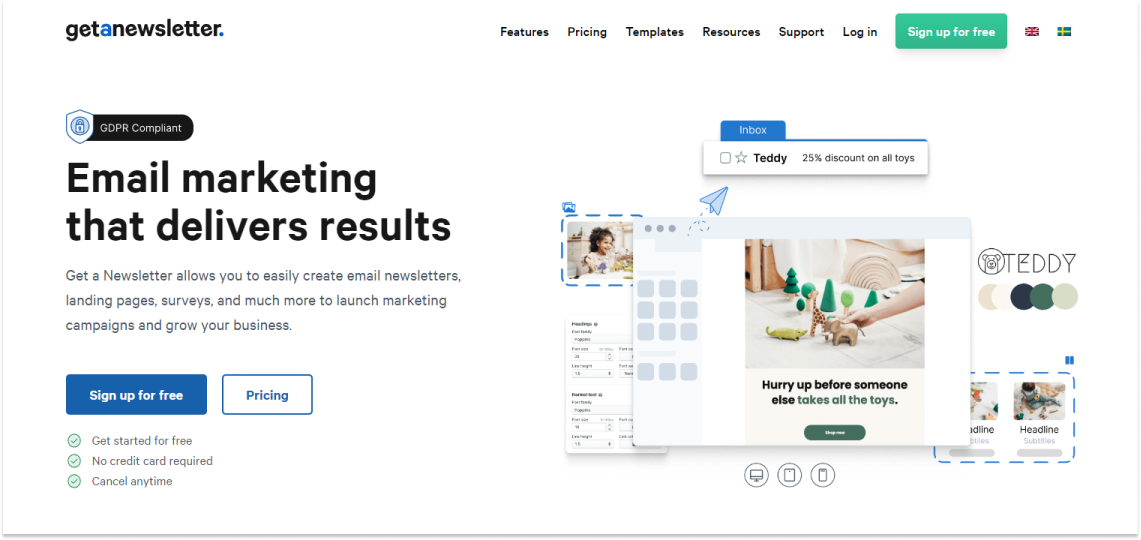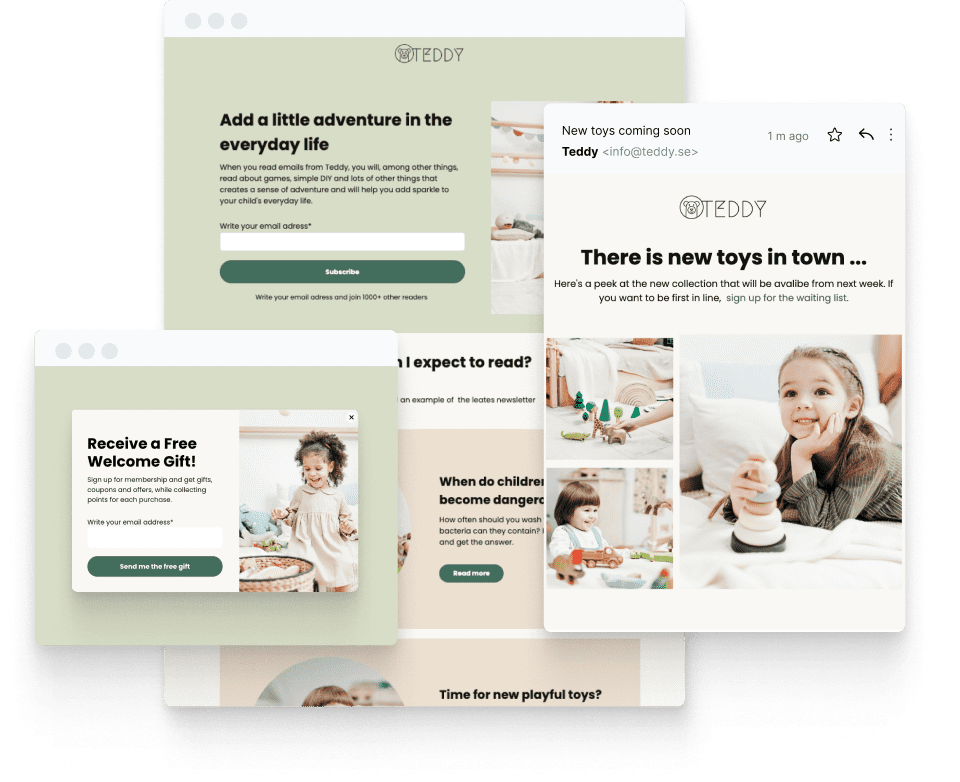Finding high-quality leads in B2B is one of the most challenging tasks. This process can be overwhelming with the variety of available lead-generation tools and options.
This article will examine common lead gen missteps and give valuable suggestions for addressing them. This way, businesses can sharpen and enhance their efforts, leading to more fruitful, strategic, and impactful outcomes.
Not Defining Your Target Audience Clearly

Understanding the target audience is one of lead generation’s most fundamental yet overlooked aspects. Without properly defining the ideal customer profile (ICP), crafting strategic marketing efforts that appeal to the audience is impossible. Ultimately, businesses might end up wasting resources targeting the wrong people.
How to Fix It
- Conduct comprehensive market research: A business must take the necessary time to research and understand its target audience thoroughly. Gather insight into pain points, preferences, decisions, and shopping habits to form the foundation of all marketing strategies and messages.
- Segment the audience strategically: Recognizing that all potential customers are different within a target market. Audience segmentation is often based on industry, size, roles, needs, and behaviors. This segmentation allows customizing emails, messages, content, and campaigns to each group’s unique traits. Personalization will also boost engagement and sales.
- Use insights to inform all marketing efforts: With a clear grasp of the ideal customer profile and well-defined segments, apply this understanding across marketing efforts.
Underestimating the Importance of a Website

Many companies focus excessively on social media and pay channels for lead generation while neglecting their website. However, many businesses underestimate the significance of having a well-designed, user-friendly website that effectively captures and nurtures leads, ultimately hindering their ability to convert website visitors into qualified prospects.
How to Fix It
- Feature targeted landing pages and integrated inputs: Specialized pages for specific promotions, products, or services boost collecting prospects efficiently. Place sign-up to collect subscribers or convert visitors with pop-up forms intentionally, letting visitors casually share details—tailor forms for maximizing interest and actions through clear value and call-to-actions (CTAs).
- Make it modern and user-friendly: To have high-converting landing pages on your B2B website both modern and user-friendly, you need to pay attention to detail and understand your audience’s needs. Improving forms on your website, for example, can greatly reduce user frustration and abandonment.
Using a form tracking system can provide insights into user behavior, allowing for targeted adjustments that improve the form-filling process. Sometimes minor, data-driven changes can significantly impact the overall user experience.
Overlooking Email Marketing

While social media is a great awareness tool, email still boasts high engagement and response rates. However, many marketers neglect to optimize their email marketing efforts and implement email personalization for better results.
How to Fix It
- Implement multiple strategies to build an email list: Adopt various tactics to build an email list, such as providing helpful resources (e.g., reports, webinars, trials) in exchange for emails, running targeted ads across channels, promoting emails on the site and media, and incentivizing present customers or subscribers to refer others.
- Segment and personalize email campaigns: The next step after building an email list is to separate subscribers by interests, actions, engagement levels, and other applicable standards. Design customized marketing campaigns speaking directly to each segment’s needs and preferences, increasing the prospects of gaining attention, fostering involvement, and driving desired behavior.
- Utilize engaging surveys as lead magnets: Surveys collect valuable insights and addresses, providing an interactive and intriguing way to attract and understand potential customers. Strategically design surveys that gather insights and motivate participants to share contact info for follow-ups and further engagement.
- Ask strategic survey questions: Within surveys, include questions that contribute to a deeper understanding of possible customers’ pain points, goals, challenges, and decision processes. This valuable data can inform the overall marketing strategy and allow customizing messages, content, and offers, boosting the relevance and resonance of communications.
- Share surveys with existing contacts: Leverage surveys to attract new potential customers and share with the current email list, customer base, or engaged audience. This process can add valuable insights into the evolving needs and preferences of the existing audience, allowing for strengthening relationships and fostering long-term loyalty.
Neglecting Content Marketing

While social media expands a brand’s reach, high-quality content deepens relationships and builds credibility to attract target accounts actively considering a purchase. However, many marketers overlook developing a strategic long-form content plan aligned with their messaging.
How to Fix It
- Develop a comprehensive content strategy: Create a systematic content strategy aligning with the marketing and business goals to determine the material (e.g., blog posts, whitepapers, case studies, videos, podcasts), the topics and themes, the distribution channels, and the desired outcomes (e.g., lead generation, brand awareness, thought leadership).
- Create valuable content for every sales funnel stage: Develop diverse content that addresses potential customers’ unique needs, pain points, and concerns at each stage of their buyer’s journey. For example, top-of-funnel material could include educational blog posts, infographics, and social media content to establish the brand as a trusted authority.
Or by using growth marketing techniques here, you can focus on enhancing the appeal and reach of your early-stage content, ensuring it’s always evolving based on what works best to attract and engage your audience. - Implement a nurturing strategy: Simply creating high-quality material is not enough; businesses need a solid plan to nurture and guide potential customers through the sales funnel. Marketing automation tools help deliver personalized content experiences based on individual interests, behaviors, and engagement levels. As a result, these tools develop deeper connections, build trust, and drive conversions.
- Promote content strategically: Develop a comprehensive content promotion strategy by leveraging different channels, such as social media, email marketing, influencer outreach, and paid advertising, to boost the material’s reach and visibility. Monitor and analyze engagement metrics to optimize promotion efforts and ensure maximum impact.
- Repurpose and refresh content: Creating new, high-quality material can be resource-intensive. Explore opportunities to repurpose and refresh them for different formats, channels, or audience segments to maximize the value of the existing content assets. This approach can extend the lifespan and reach of the content while minimizing redundant efforts.
Conclusion
By addressing common mistakes like unclear targeting, under-optimized websites and emails, and overlooking content marketing, B2B companies can simplify lead generation.
Implementing strategic, integrated approaches informed by buyer personas across all stages can consistently attract ideal prospects, filling the funnel with highly qualified leads primed for sales conversions. Prioritizing continuous testing and optimization further refines methods for optimal results.
Get started with email marketing
Create beautiful email newsletters for free with Get a Newsletter and reach your subscribers and customers in a heartbeat.

Leave a Reply